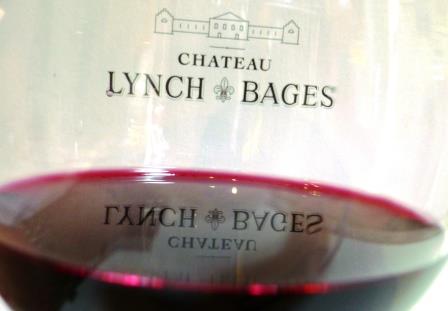1961 Château Lynch-Bages Pauillac Bordeaux France Wine Tasting Note
24802 Views
|
1961
Château Lynch-Bages (Pauillac)
Cigar box, wet earth, cedar chest and cassis on the nose. The wine is better on the palate with its fresh, sweet cherry, spicy cassis flavors and medium bodied, fully developed character. Each bottle is different, especially with 50 years of age. It’s important to note, I’ve had much better bottles and a few that were worse. Such is life. 6,213 Views Tasted Dec 9, 2014With the patina of age in the color and nose, the perfume dealt out a complex hand of cedar wood, tobacco leaf, cigar box, cassis, cherry, spice box, leather, forest floor, wet earth, truffle and cigar ash. There was a refined sense of masculinity to the texture. The long, spicy, cherry and cassis filled finish displayed the sensations that only a perfectly, mature, older Bordeaux can deliver. At this age, it's all about the bottle. This was picked up from the original owner who kept it in a cold, dark cellar since the day it was delivered. What a nice treat! I'm definitely hanging on to some of my 1989 and 1990 Lynch Bages to enjoy when they are 50 years old. On the other hand, perhaps I should do that with my 1982's. That's only 20 more years from now. 6,395 Views Tasted May 3, 2012Cedar, cherries, tobacco, earth, forest floor, truffles, mushroom, minerals and cassis are easy to spot. Full bodied, rich and concentratedr, this still powerful wine pairs grace with elegance and the patina of age to deliver textural and aromatic sensations. 8,609 Views Tasted Feb 9, 2010A nice display of Cuban tobacco, forest floor, plums and cassis. Good weight, but as a matter of style, this wine was almost brutish. Very masculine and brawny, almost simple. The finish ended with a hint of tart flavors. I've tasted better bottles. 3,585 Views Tasted Jun 15, 2007 |

When to Drink Chateau Lynch Bages, Anticipated Maturity, Decanting Time
Chateau Lynch Bages needs time in the cellar before it can truly be enjoyed, as the wine is quite powerful and tannic in its youth. Young vintages can be decanted for an average of 2-4 hours, or more. This allows the wine to soften and open its perfume. Older vintages might need very little decanting, just enough to remove the sediment.
Chateau Lynch Bages is usually better with at least 10-15 years of bottle age. Of course, that can vary slightly, depending on the vintage character. Chateau Lynch Bages offers its best drinking and should reach peak maturity between 15-50 years of age after the vintage.
Serving Chateau Lynch Bages with Wine, Food and Pairing Tips
Chateau Lynch Bages is best served at 15.5 degrees Celsius, 60 degrees Fahrenheit. The cool, almost cellar temperature gives the wine more freshness and lift. Chateau Lynch Bages is best served with all types of classic meat dishes, veal, pork, beef, lamb, duck, game, roast chicken, roasted, braised, and grilled dishes.
Chateau Lynch Bages is a perfect match with Asian dishes, hearty fish courses like tuna, mushrooms, and pasta as well as cheese.
The white wine, Blanc de Lynch-Bages is perfect for a wide variety of seafood dishes, raw and cooked, chicken, veal, pork, and of course, cheese.
The Cazes family owns vineyards in several regions outside of Bordeaux. Since 2006 the Cazes family owns vines in the Rhone Valley, in Chateauneuf du Pape they own Domaine des Senechaux and they also make wine at Domaine de L’Ostal Cazes in Minervois. They have a partnership in the Douro with the Roquette family to produce Xisto Roquette E Cazes.
Wine, food, and hospitality are not the only things the Cazes family is invested in. In 2015, Jean Michel Cazes announced he was producing beer as well. The first beer from the Cazes family Brasserie de Bages beer is aptly named "D2," which takes its name from the famous Route de Medoc highway in Bordeaux that runs north to south in the Left Bank. Three beers are being made, Le Cask, which is aged in old, used Lynch Bages barrels, and a 100% wheat beer, La Beneze.
The Cazes family is also involved in arranging for customers to produce their own wine through their company, VINIV. Customers can purchase grapes from either the Right Bank or the Left Bank, and with the help of winemakers at Chateau Lynch Bages, they can create their own custom blend and label it as they wish, provided they purchase at least one barrel, which is 25 cases of wine.
Starting with the 2015 vintage, Chateau Lynch Bages upped their technology game when they became the first estate in Bordeaux to use the "Winegrid" system. Wine grid monitors the development of the wine inside the barrel or vat, keeping track of the wine's alcohol level, sugar content, color, and ambient temperature. The technology is being developed with the help of Jean Charles Cazes.

